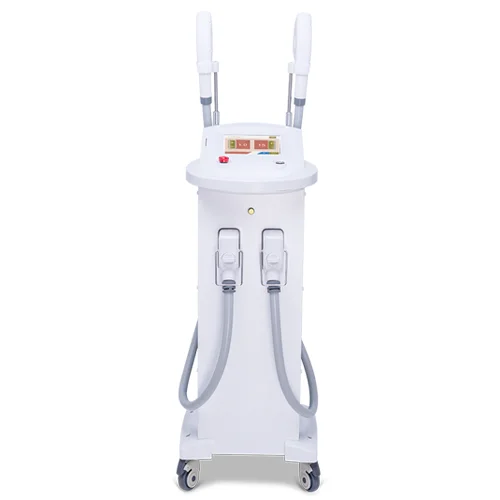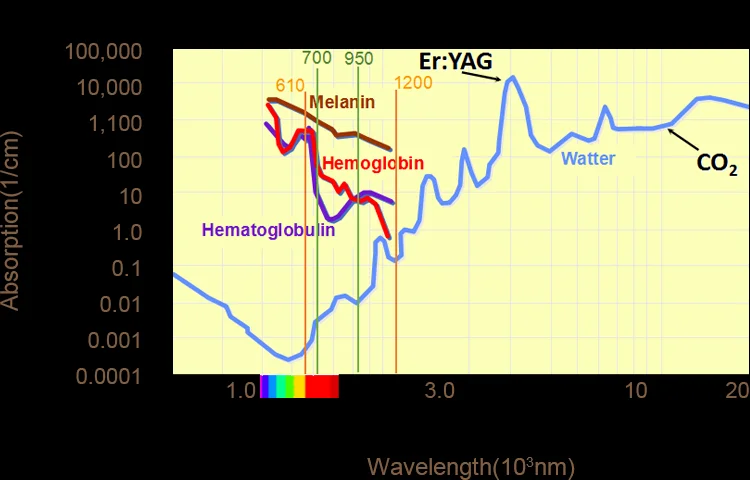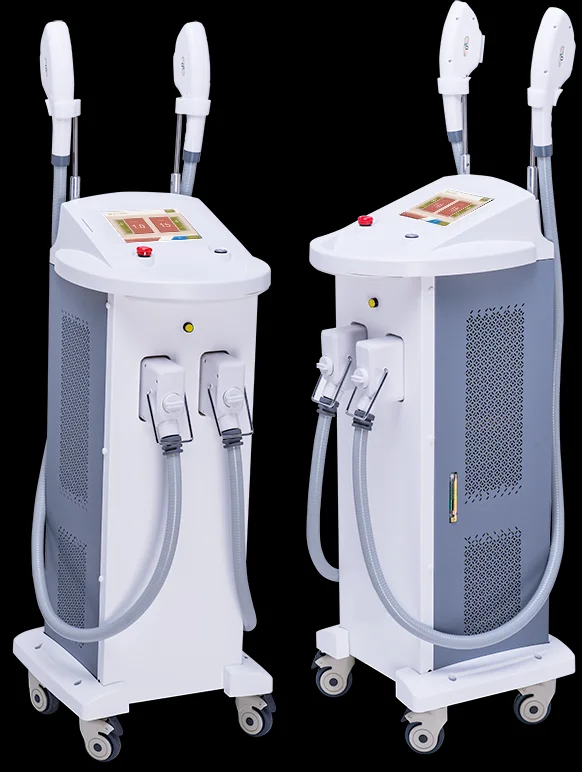How Often Can You Have a Hair Removal Treatment?
Laser hair removal is fast becoming widely recognized as one of the most effective and longest-lasting treatments for getting rid of unwanted hair. Timing sessions correctly will produce optimum results, and an in-depth understanding of the cycles of hair growth further optimizes the process of laser hair removal.
The blog will cover treatment timing in detail, the science behind hair growth cycles, and how aesthetic businesses can leverage technology to provide safe, comfortable, and effective treatments.
We will introduce Beijing Anchorfree Technology Co., Ltd. and its advanced B680M laser hair removal system, sharing some specific parameters that enhance the effectiveness and comfort of treatments, especially in terms of timing and precision.

Understanding the Timing of Laser Hair Removal: Why It Matters
Laser hair removal is achieved by intense light energy targeted at melanin inside the follicles. When the treatment has been done at just the right moment, with consideration for the different stages in hair growth, depends on some crucial timings regarding successful laser hair removal. Now let us elaborate based on the grounds that this exact timing of treatment was based upon:
Timing in Treatment: Hair Growth Cycle
The hair growth cycle has three distinct phases, all of which are critical in defining the timing of laser hair removal treatments. These are as follows:
Anagen Phase (Active Growth Phase): during this phase hair follicles become the most responsive with the laser treatment because they carry a full amount of melanin. It’s due to the existence of melanin that laser energy targets and functions effectively in the stages of anagen. Generally, this phase goes to a duration of 2-3 weeks.
Catagen Phase (Transitional Phase): Very brief it tends to last around 2-3 weeks; growth of hair stops completely, follicle shrinking detaches it from the blood supply and renders the hair less responsive to laser treatment.
Telogen Phase (Resting Phase): This is the resting phase when the hair follicle rests, and shedding occurs. The active growth of the follicle is on hold, and thus it is much less responsive to laser treatments during this phase.
Laser hair removal works most effectively on hair follicles that are in the anagen phase, where the hair acts as a conduit for the laser to disrupt a follicle’s ability to grow new hair. The important point derived from this is that the timing between treatments should coincide with the growth cycle of the hair for it to affect the maximum number of follicles in their most receptive phase.
Timing Between Laser Hair Removal Sessions: How Often Is Too Often?
Timing of treatments is important and can determine success in laser hair removal treatments. Following is a general guideline about treatment frequency for various body areas, based on the hair growth cycle:
Facial Areas: The hair on the face is faster growing, so the treatments are generally done every 4-6 weeks. The face is more hormonally active compared to other parts of the body, which would explain that the hair follicles of the face are in the anagen phase much more, and optimum results are reached when more frequent treatments are carried out.
Body Areas: Larger areas, such as the legs, arms, or back, are typically treated every 8-12 weeks. Since these areas grow their hair very slowly and their follicles are less frequently in the anagen stage of growth, longer intervals between treatments are needed to ensure hairs are being treated during the stage at which they are most responsive.
Why too frequent treatments can be ineffective:
It might seem like more frequent treatments would speed the process up, but these have actually been shown to have a rather negative impact in the name of overall effectiveness. Doing the treatments too close to one another will keep many active hair follicles out of the anagen stage and limit how effective a single session may be since not enough would be present by that point of treatment.
On the other hand, if treatments are spaced too far apart, this allows more time for hair follicles to move into the catagen or telogen phases, thus reducing effectiveness. Thus, the ideal treatment frequency allows for the maximum amount of hair follicles in the anagen phase-just right to bring up maximum efficiency.
How Many Sessions of Laser Hair Removal Does One Need?
Most people are in need of permanent hair reduction within 6-12 series, although this depends on each particular case.
Not all hairs grow simultaneously
As mentioned, hair follicles are at different phases of the growth cycle. Each laser treatment will treat hair in the anagen phase; however, at any one time, only a part of hair follicles is in this phase of growth. Multiple sessions ensure that all hair follicles are treated during their most responsive phase.
The thickness of the hair is different
while coarser hair, like underarms or bikini areas, might require more frequent treatments, finer hair on the arms or face does not.
Skin and hair type
Generally speaking, dark hair and light skin tend to work the best because of the greater contrast, thus providing a better target for the laser when working on your hair’s melanin. With finer hair, or when working with very dark skin, there needs to be adjustments to the settings used, which means sessions might also take a bit more time and frequency.
The Role of Technology in Treatment Timing: Spotlight on the B680M
Equipment is so crucial in terms of effectiveness and efficiency for companies offering laser hair removal services. The B680M system from Beijing Anchorfree Technology Co., Ltd. features an advanced technology design for enhanced comfort and effectiveness in treatments that improve treatment timing.
Key Features of the B680M for Optimal Treatment Timing
DPL Technology

This advanced DPL technology in the B680M represents a much more pure spectrum of light compared with that of standard IPL. It lets better and much more efficient absorption by the melanin into the hair follicle with less pain felt. For that reason, this technology at a lengthened wavelength of 700–950nm advances better the efficacy of the treatment through targeting most accurately during anagen phase with a view to reducing less frequent treatments. Of course, different people usually expect different treatment outcomes.
Efficient Cooling System:
One of the major problems in laser hair removal is comfort while performing treatments. The B680M has an advanced cooling system wherein skin cooling is effected with a sapphire crystal to reduce the risk of burns and make the treatment more comfortable. This will prolong the life of the xenon lamp, maintain consistent energy output, and also reduce maintenance works that can affect treatment intervals.
Stronger Pulse and Frequency:
The B680M operates on a 1-5Hz frequency. It offers steady and powerful pulses that ensure effective treatment in the target area. The consistency in energy ensures maximum efficacy of every single pulse without the need for more frequent repetitions.
Personalization settings:
one can personalize the B680M in many ways which makes the job of changing the treatment settings regarding the skin type, hair color, and the particular area being treated less daunting. Such personalization helps in adjusting the frequency of the treatment which helps every client in their own unique manner with better results.
When is the time for Maintenance?
The hair reduction with laser treatment will also require some maintenance sessions after the initial treatments are completed. Maintenance sessions can be spaced apart for most clients after about 6 to 12 months, since after a certain point in time the regrowth would not be quite as rapid, with less active follicles. Therefore, less number of sessions are needed for keeping the skin smooth and hair-free.
Post-treatment Care and Timing Consideration
Another critical factor that makes laser hair removal treatment a success is the time of post-treatment care. To ensure that the treatments are effective and the skin stays healthy, it is recommended that:
Avoid Sun Exposure: The exposure of the treated area to the sun may cause hyper-pigmentation and other skin issues. The sun-exposed area is to be avoided before and after the treatments, and sunscreen is to be applied on the area treated.
Shave, Don’t Wax: To maintain the effectiveness of laser hair removal, you should avoid waxing or plucking the treated area. Shaving is acceptable between sessions because it leaves the hair follicle intact.
Don’t Skip Appointments: While it can be very tempting to try to extend the length of time between treatments to save time or cut costs, missing any treatments can delay your results and make the process less effective. It’s always best to follow the guidelines regarding timing set by your technician.
Conclusion: Perfect Timing for Laser Hair Removal

Everything is about timing when it comes to laser hair removal. A proper understanding of the growth cycle and working with good, high-quality technology-such as the B680M-can help a business make sure its clients get the most effective and comfortable treatments. If treated appropriately and at the right time intervals, with good care and quality equipment, long-term results are ensured to yield smoother, hair-free skin.
Beijing Anchorfree Technology Co., Ltd-B680M Model: this is a reliable and efficient model, which offers effective performance to safely support professional administration of Laser Hair Removal with consistency for guaranteed results through tailored-made service provision according to each type of client need.







